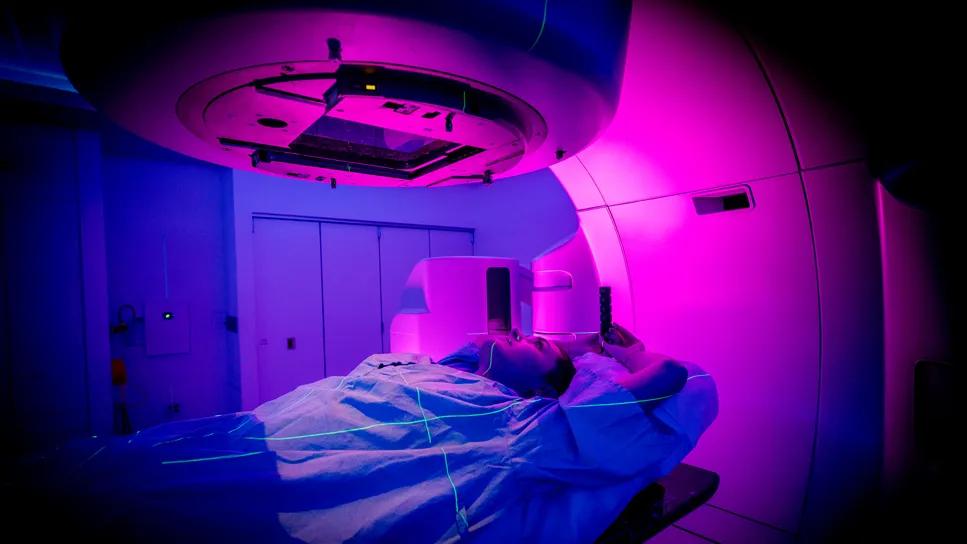No significant differences seen in breast volume loss between whole and partial breast treatment approaches

New study findings suggest that breast volume loss isn’t worse following five-fraction whole versus partial breast radiation therapy, adding further support for the hypo-fractionated radiation approach after breast conserving surgery.
Advertisement
Cleveland Clinic is a non-profit academic medical center. Advertising on our site helps support our mission. We do not endorse non-Cleveland Clinic products or services. Policy
The data, from 72 patients treated at Cleveland Clinic Cancer Institute who underwent partial mastectomy followed by radiation treatment, were presented at the American Society for Radiation Oncology (ASTRO) meeting by Elizabeth Obi, MD, of the Department of Radiation Oncology.
Radiation therapy is routinely performed following breast conserving surgery to decrease the risk of local recurrence in patients diagnosed with early-stage breast cancer. Over the years, hypo-fractionated techniques have been developed to improve efficiency without diminishing efficacy. Most recently, 15 and 25 fraction schedules delivered over three to five weeks have been whittled down to just five “ultra hypo-fractionated” sessions.
These five-fraction schedules are as effective as longer schedules and attractive since they’re more convenient. As such, they are now widely adopted. However, there has been a question about late toxicity from treating the whole breast in five fractions, with some worrying that giving more dose per day in a shorter course to the whole breast poses a risk for later breast shrinkage over time.
This study suggests it would not. “Whether we did the whole breast or the partial breast, there was no difference in breast volume at six months or 18 months after treatment. This may provide added reassurance for patients considering five-fraction radiation therapy,” Dr. Obi says.
According to lead author Sheen Cherian, MD, of the Department of Radiation Oncology, “Advances in radiation planning and delivery have made it possible to deliver breast radiation safely and effectively in just five fractions. This approach is not only convenient for patients but also resource-efficient for healthcare systems. Given its proven efficacy and favorable tolerability, I believe five-fraction breast irradiation is poised to become the standard of care in the near future.”
Advertisement
Study participants were 72 women with stage 0-II breast cancer, of whom 49 underwent partial (30Gy) and 23 whole-breast (26Gy) five-fraction radiation treatment. The median age of patients was 68 years, ranging from 45-85 years. A majority (86%) were white. Most had invasive disease and were estrogen receptor positive.
Obi and colleagues used the previously published V=(1/3)πRccRmloHmlo to estimate breast volume from mammogram radius and height measurements of both craniocaudal and mediolateral oblique views.
Breast volume decreased significantly and equally in both groups from baseline to six-month and 18-month mammograms (p<0.0001 at both timepoints), but there was no difference between the two regimens (p=0.096) from baseline, and no significant change in volume between six and 18 months for either group (p=0.091).
For the next steps, Dr. Obi says, "I would be interested in a similar volumetric analysis with a larger cohort of patients, as well as a dosimetric analysis between these two regimens."
Advertisement
Advertisement

Risk is not trivial; finding may assist in informed decision making

New research demonstrates that cfDNA methylation patterns may noninvasively identify tumor hypoxia in head and neck squamous cell carcinoma

Program reduces major contour changes and variations in organ-at-risk dosing across health system

Despite wide variations in contours, researchers find AI and physician methods yield equivalent results.

Radiation therapy produces anti-inflammatory response

Noninvasive treatment may slow progression of Dupuytren's disease and plantar fibromatrosis

Ultra-Hypofractionated Whole Breast Irradiation and Partial Breast Irradiation Reduce Many Toxicities

Major study demonstrates importance of having a multidisciplinary approach to treatment for large, locally advanced tumors